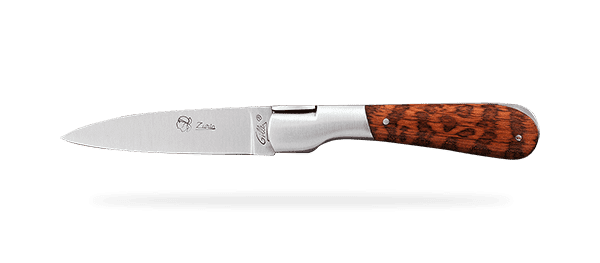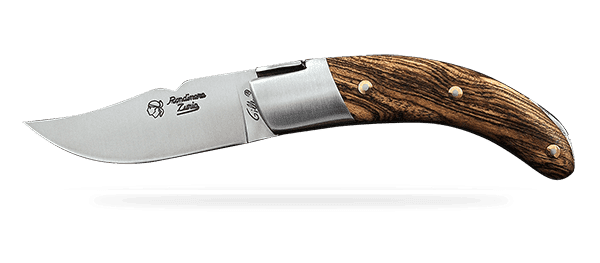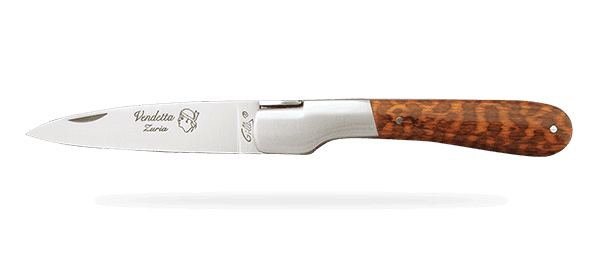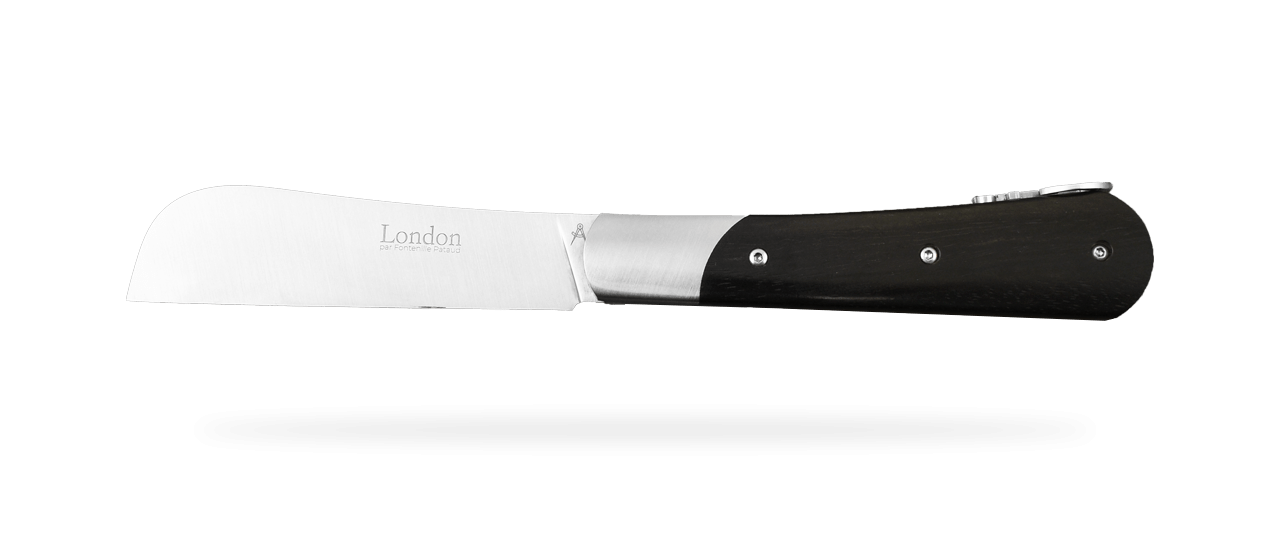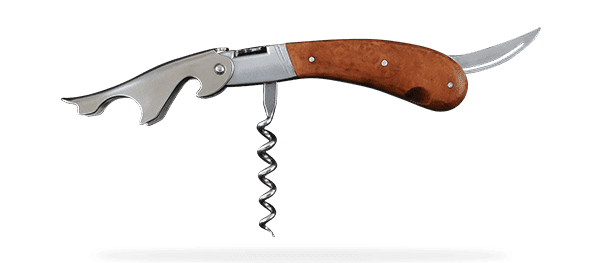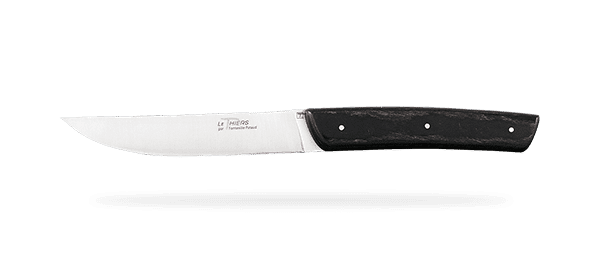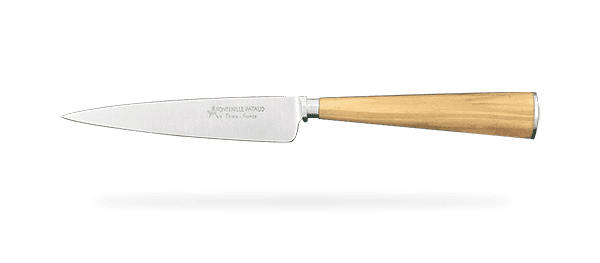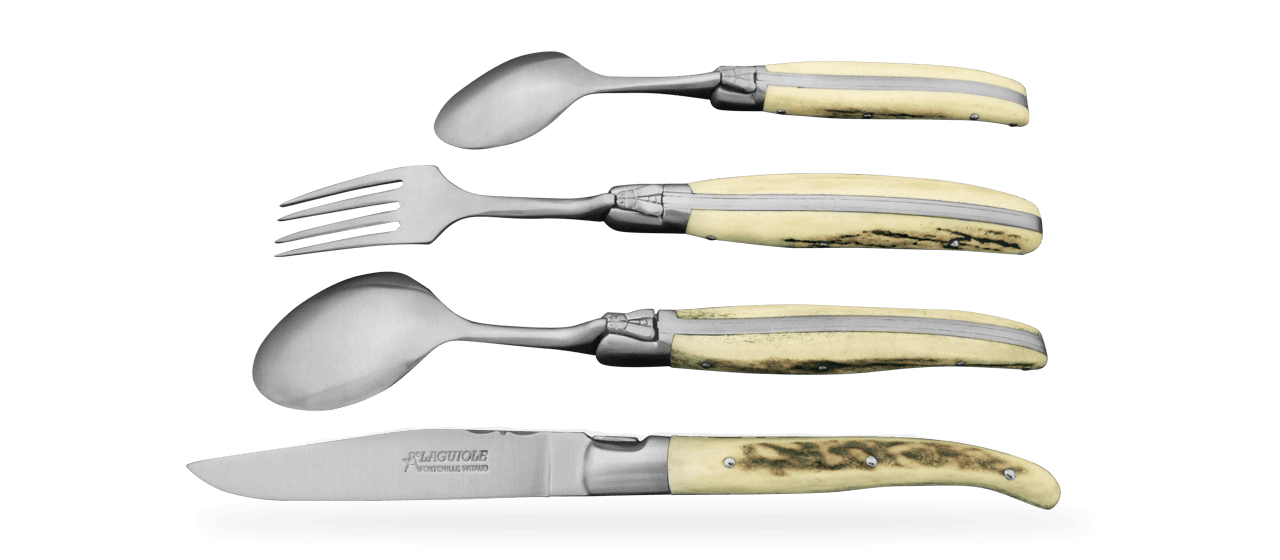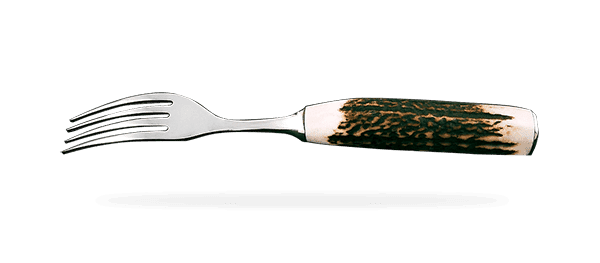Composite materials
Ammonites
Fossil ammonites in an epoxy resin handle. This fossil from the Devonian period can be recognized by its more or less rolled univalve shell.

BRASS
Black resin with brass inlay.
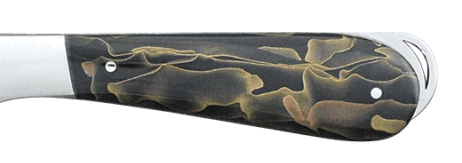
BRONZE
Black resin with bronze inlay.

CARBON FIBER
Carbon fiber coming from aeronautic industry. Excellent mechanical property : 15% better than commercial carbon fibers. That green material is made of 100% recycled fiber & resin. Furthermore, that process does not produce any waste.

Elforyn
A blend of different resins, resistant to cleaning agents and does not yellow under light.

FAT CARBON
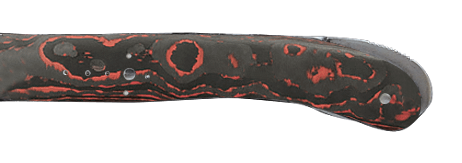
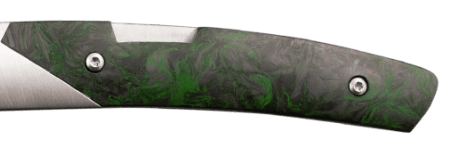

FAT CARBON GLITTER
Colored carbon fiber widely used in cutlery. It has very interesting mechanical properties, such as a low density for a high mechanical resistance.


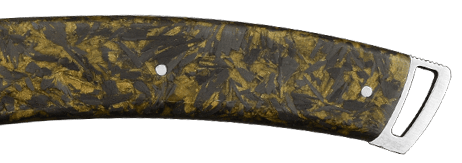



FULL DAMASCUS

G10

INLAYS
Feather
Geniune feather inlay in Cristallium.

Freemason
Freemason inlay in Cristallium.

Gold sheet

Watch mecanism
Watch mechanism inlay in Cristallium.

LACE
Cardboard inclusion in resin.

MAMMOTH FRAGMENTS
Mammoth ivory fragments included in epoxy resin.

MICARTA
Micarta is made of paper compressed under high pressure.
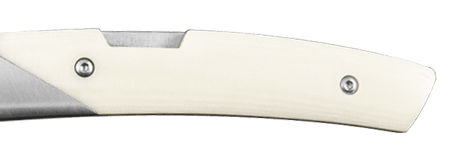

PHOSPHORESCENT
Phosphorescent resin, it has a plain pale colour indoor, bit it changes to a strong blue colour immediately when exposed to direct sunlight (UV-light). While the material is in the light it charges up the third stage, which is exposed in darkness, where it glows in a strong yellow green colour.

THERMOCHROMIC
Thermochromic resin, colour is dark blue at temperatures below 28°C (82°F), but respectively turn bright blue at higher temperatures.

Titanium
Grade 5 Titanium. Titanium is an exceptional metal that is making its entry into the field of cutlery, while it is commonly used in advanced sectors of activity (biomedical, aerospace or military). Its exceptional properties make it a material of choice.




















